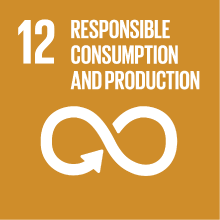COLLOIDS AND INTERFACES
- Academic year
- 2022/2023 Syllabus of previous years
- Official course title
- COLLOIDS AND INTERFACES
- Course code
- CM1313 (AF:355496 AR:186380)
- Teaching language
- English
- Modality
- On campus classes
- ECTS credits
- 9
- Degree level
- Master's Degree Programme (DM270)
- Academic Discipline
- CHIM/06
- Period
- 1st Semester
- Course year
- 2
- Moodle
- Go to Moodle page
Contribution of the course to the overall degree programme goals
Module 2 of the course of Colloids and Interfaces provides the bases for understanding the physicochemical properties of nanostructured surfaces as well as colloidal systems, and evalauting their stability. It includes a series of laboratory experiments focusing on the synthesis of functional molecules and/or functionalized nanoparticles characterized by detectable association phenomena in solution, allowing a thorough study of their aggregation properties and colloidal stability from a molecular point of view. The course is mandatory within the degree in Bio and Nanomaterials as it allows the student directly to engage in the preparation of nanostructured systems of different chemical nature, understanding and measuring the properties of mutual interaction and carrying out the relative characterization in solution.
Expected learning outcomes
a) Know and to be familiar with the theoretical basis and the the properties of a surface and of colloidal systems;
b) Understanding the different types of weak attractive interactions that influence aggregation in solution;
c) Knowledge of the main preparation methods of the various nanometric systems in solution and related methods of characterization;
d) demonstrate a good practical manual ability and a necessary operational safety.
2. Ability to apply knowledge and understanding:
a) Ability to calculate some structural parameters of the colloid systems by light scattering measurements;
b) Ability to calculate the specific surface area from physisorption measurements;
c) Selection of the more suitable surfactants for an emulsion;
d) Ability to correlate the different laboratory experiments procedures and with the observedresults, highlightinh possible points of contact, similarities and specificities;
e) Learning the practical details of the instrumental techniques of investigation used during the laboratory.
3. Judgment skills:
a) Ability to evaluate, in a reasoned manner, experimental results associated to surfaces or colloidal systems;
b) Ability of choosing independently the appropriate technique for the characterization of a given colloidal system;
c) Ability of proposing suitable experiments for the preparation and characterization of nanoparticles and aggregating supramolecular systems.
4. Communication skills:
a) To use in an appropriate way the terminology and the symbolism learnt during the course;
b) To interact with the teachers and the classmates in a dynamic, effective and proper way;
c) Communicate constructively with both the instructor(s)and lab mates during the laboratory sessions, always maintaining a high level of attention and chemical understanding of the experimental work that should be performed;
d) Choosing the correct technical terminology and nomenclature and apply with clarity and authority in a laboratory context as well as in concise written reports.
5. Learning ability:
a) To take notes during classes in a proper way, evidencing the topics according to their importance;
b) Perform independently an integration between the course material provided by the instructor and lecture notes;
c) Record the observed experimental results, such as macroscopic and chromatic variations observed in the course of the experiments, and relate them to the information acquired during the theoretical part of the course and the introductory lessons of the laboratory;
d) Drafting lab reports of a few pages which include in a clear, succinct and exhaustive way the objective of the experience, the experimental data and the related discussion of the results.
Pre-requirements
In order to ensure a complete understanding of the course laboratory module, students should have acquired the Organic Chemistry training objectives regarding, in particular, the reactivity of the functional groups, as well as the General Chemistry training objectives related related to the structure and inorganic reactivity of materials.
Contents
Colloids and surface chemistry: general aspects. Specific surface area. Sedimentation and diffusion. Solution thermodynamics: Osmotic and Donnan equilibria. Rheology of fluids and dispersions. Static and dynamic light scattering, Surface tension and contact angle. Surfactants. Emulsions. Colloidal structures. Adsorption at gas-solids interfaces.
In relation to the training objectives and expected learning outcomes, the contents of Module 2 of the course are listed as follows:
Lesson 1 and 2: Brief introduction to nuclear magnetic resonance spectrometry (NMR), theory and application for spectral interpretation, assignment of signals and study of the interaction between molecules by monitoring the value of chemical shift with concentration and two-dimensional diffusion spectra.
Lesson 3 and 4: Lessons on weak attractive interactions between chemical species, hydrogen bonding, electrostatic interaction, ion-dipole interaction, dipole interaction, van der Waals interactions, ion-aryl interaction, pi-pi interaction, halogen bonding, classic and non-classical hydrophobic effect.
Lesson 5 and 6: Description of the laboratory experiments and recommendations on the proper behavior to be kept in the laboratory.
Laboratory experience 1: Experimental Techniques for CMC Determination;
Laboratory experience 2: Nanomicelles Preparation and Characterization;
Laboratory experience 3: Synthesis and Characterization of Resorcinarene Capsules;
Laboratory experience 4: Preparation and Characterization of Polymeric NPs;
Laboratory experience 5: Synthesis and Characterization of Self-Assembled Liquid Crystals;
Laboratory experience 6: Preparation and Applications of Superhydrophobic Surface Coatings.
Referral texts
Module 1: P.C Hiemenz and R. Rajagopalan, Principles of Colloid and Surface Chemistry (Marcel Dekker, 1997).J. Lyklema, Fundamentals of Interface and Colloids Science (Academic Press,1991).D. Myers, Surfaces, Interfaces and Colloids (Wiley-VCH,1999). Autori Vari Chimica Fisica dei colloidi e delle interfasi (CLUP 1985).
Module 2: An Introduction to Interfaces and Colloids. The Bridge to Nanoscience, John C. Berg, World Scientific, 2nd Ed. 2012, ISBN: 978-981-4299-82-4
Copies of the lecture slides are available on the course page on Moodle.
Assessment methods
Module 2: It is mandatory that the student attend at least 4 out of 6 lab days and to deliver the lab reports to be admitted to the oral exam. During the oral exam, the student will be asked to present and discuss a scientific publication with the aid of a presentation reporting the scientific results of colloidal nanometric systems and/or self-aggregating materials. This presentation will then be the starting point for the questions that will be addressed to the student in order to ascertain the level of understanding of the topic. The questions will have both a descriptive character to which the student will have to answer proving to know the topics of the course, and others whose function is to ascertain that the student has deeply understood the logic behind the experimental techniques, the fields of application, the limits and complementarities between experiments (see expected learning outcomes). Evaluation of the lab reports will be included in the formulation of the final mark for Module 2.
The exam final mark will be agreed upon jointly by Prof. Benedetti and Prof. Fiorani.
Type of exam
Teaching methods
Module 2: The course is organized into a series of practical laboratory experiments (5-6 depending on the speed of execution of the groups for a total duration of 6 days of 6 hours each) that will be held at the laboratory of Organic Chemistry, Building Beta 1st floor. These lab activities will be preceded by a series of introductory lessons (12 hours in the class divided into lessons of two hours) regarding the description of experiments as well as a quick analysis of some analytical techniques that will use the students and some aspects of supramolecular chemistry useful for understanding the experiences themselves.
At the beginning of the first day of laboratory will be reminded to the students i) some rules concerning the behavior to be kept in the lab and ii) the importance of the use of personal protective equipment and the proper handling of chemicals.
Copies of the lectures slides, experimental procedures and experimental data will be uploades on the course Moodle space.
Further information
Accessibility, Disability and Inclusion
Accommodation and support services for students with disabilities and students with specific learning impairments:
Ca’ Foscari abides by Italian Law (Law 17/1999; Law 170/2010) regarding supportservices and accommodation available to students with disabilities. This includes students with mobility, visual, hearing and other disabilities (Law 17/1999), and specific learning impairments (Law 170/2010). In the case of disability or impairment that requires accommodations (i.e., alternate testing, readers, note takers or interpreters) please contact the Disability and Accessibility Offices in Student Services: disabilita@unive.it.
2030 Agenda for Sustainable Development Goals
This subject deals with topics related to the macro-area "Circular economy, innovation, work" and contributes to the achievement of one or more goals of U. N. Agenda for Sustainable Development


